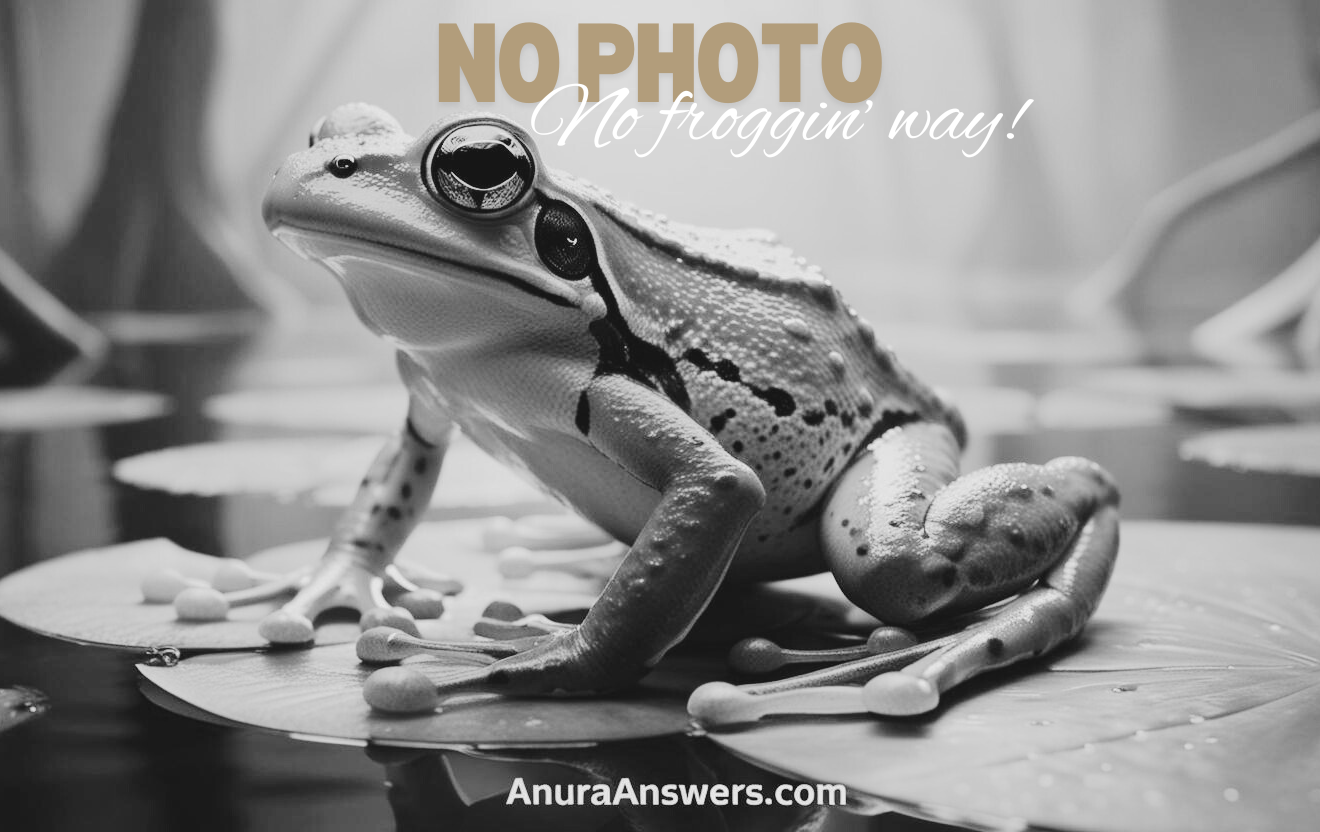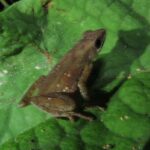Unveiling the Secretive Life of Probreviceps durirostris: Tanzania’s Mysterious Forest Floor Resident#
Deep within the misty, verdant forests of Tanzania, nestled amid damp leaf litter and draped mossy logs, lives a small amphibian whose story remains largely untold. Known scientifically as Probreviceps durirostris, this remarkable frog quietly thrives, hidden from the casual observer, rarely witnessed and seldom studied. Yet its subtle, cryptic existence offers profound insight into forest ecosystems, evolutionary marvels, and delicate ecological balance.
Mysterious and fascinating, Probreviceps durirostris, commonly known as the Hard-snouted Forest Frog, spends most of its life beneath the protective mantle of the damp forest floor. Teeming with intriguing adaptations, rich in ecological relevance, and shrouded in a gentle aura of mystery, this little amphibian serves as an essential puzzle piece amid Tanzania’s rich biodiversity tapestry. Join me as we delve deep beneath the canopy, quietly turning logs and brushing aside leaves, to uncover the secretive life, unique biology, and conservation challenges confronting this unique creature.
Taxonomy and Classification#
Probreviceps durirostris belongs to the family Brevicipitidae, an intriguing group of small-bodied frogs native to predominantly southern and eastern Africa. This family is known for their distinctive body shape—often more rounded and globular compared to their other amphibian cousins—which aids their remarkable fossorial lifestyles. Within this family sits the modestly sized genus Probreviceps, a small collection of frogs distinguished primarily by their specialized morphology designed for life beneath dense forest litter.
The genus name “Probreviceps” reflects their evolutionary affinity with closely related frogs of the genus Breviceps, a similarity demonstrated in their round, bulbous physiques. Their species epithet, “durirostris,” meaning “hard snouted,” aptly describes their firm, pointed snouts, a specialized adaptation essential for burrowing into leaf litter and soil in search of refuge and nourishment.
Natural Habitat#
Exclusively endemic to the Eastern Arc Mountains of Tanzania, particularly within the verdant Ukaguru and Uluguru Mountain ranges, Probreviceps durirostris thrives deep within montane forests and moist submontane woodlands. These high-altitude environments offer the cool, humid microclimates essential to the survival of these frogs, fostering consistently moist conditions necessary to maintain amphibian skin moisture and support their delicate life cycle.
An Intricate Forest Floor Environment#
Walking through these Tanzanian mountains is akin to traversing through pages of a vivid fairytale—the air thick with mist, towering trees cloaked in lichens, and the ground carpeted by a rich mosaic of fallen leaves, moss-covered logs, and scattered decaying organic matter. It is here, nestled amid humus-rich detritus, moss-laden stones, and beneath layers of decomposing plant material, that Probreviceps durirostris painstakingly carves out its subtle existence.
Reliant on damp, shaded microhabitats, these frogs rarely venture beyond protective cover, their entire lives intricately bound to the microcosmic world of the forest floor. Differences in humidity, canopy density, and the presence of specific vegetative cover directly influence their presence and abundance, highlighting their sensitivity to environmental changes and habitat disturbances.
Physical Characteristics#
A diminutive creature, Probreviceps durirostris typically measures just around 20 to 28 millimeters from snout to vent, roughly akin to the length of a human thumbnail. Despite their modest size, their unique appearance never ceases to captivate biologists and wildlife enthusiasts alike. Their small, compact, and somewhat round bodies are specially adapted for burrowing and navigating through dense debris, shaped like tiny spheres to facilitate tunneling and camouflaging.
A distinguishing feature indeed is their firm, prominent snout, robust and seemingly disproportionate, a powerful burrowing tool evolved through generations of subterranean adaptation. The coloration of Probreviceps durirostris further exemplifies nature’s mastery in cryptic patterning—shades of earthy brown, grey, beige, and muted green allow this frog to vanish seamlessly into the forest floor tapestry. Often lightly patterned with dark blotches or flecks, each individual’s coloration subtly varies, reflecting local habitats and further ensuring their concealment from predators and human observation alike.
Behavior and Life Cycle#
The life of the Hard-snouted Forest Frog is one of secrecy and modesty. Rarely emerging from their damp, shaded hideaways, these frogs skillfully navigate a subterranean existence designed for both survival and discretion. Predominantly nocturnal, their activities peak under the familiar security of darkness, when cooler temperatures and elevated humidity provide optimum conditions for foraging and breeding. Sensitive eyes adapted for dim light and excellent olfactory senses allow them to navigate their intricate micro-habitats seamlessly during night-time explorations.
Dining Beneath the Forest Floor#
The diet of Probreviceps durirostris largely consists of small arthropods commonly found under leaf-litter—springtails, termites, ants, beetles, mites–and tiny invertebrates flourishing within decaying organic matter. Their burrowing behavior not only provides safety but grants easy access to this rich underground buffet, serving an essential role controlling soil invertebrate populations and contributing to the complex nutrient cycling essential in forest ecosystems.
Reproduction Strategies and Parental Devotion#
Breeding behaviors in Probreviceps durirostris are genuinely intriguing. Exhibiting direct development—a feature unusual across frog species—the embryos bypass the typical tadpole phase, emerging from eggs as miniature froglets that closely resemble their parents. Females thoughtfully deposit small clutches of eggs within hidden, moisture-rich refuges—under logs, mossy crevices, or leaf-litter piles. Remarkably, parent frogs exhibit varying degrees of egg guarding and parental care, demonstrating attentive behaviors rare among other amphibians.
Ecological Role#
As small, ground-dwelling amphibians, Hard-snouted Forest Frogs play indispensable roles in the forest ecosystem. Serving as both predator and prey, these frogs profoundly influence food web dynamics. Their voracious appetite for invertebrates helps control arthropod populations, thereby maintaining equilibrium, whereas they themselves form essential prey items, supporting larger insects, spiders, small mammals, birds, and reptiles. Additionally, their highly sensitive skin and exacting environmental requirements make them invaluable bioindicator species, offering early warnings about ecosystem health and habitat integrity.
Threats and Conservation Status#
Unfortunately, the confined geographic range, specialized habitat requirements, and secretive lifestyle leave Probreviceps durirostris vulnerable to numerous ecological threats. Habitat destruction remains the most pressing concern, driven by gradual deforestation, small-scale agricultural encroachment, and selective logging across Tanzania’s mountainous forests, progressively fragmenting and altering critical habitats these frogs depend upon.
Climate change further heightens concerns, as shifting rainfall patterns and rising temperatures create profound adjustments in local hydrology and leaf litter moisture content—both integral to the species’ niche. Although currently classified as Least Concern on the IUCN Red List due to its presence in protected areas such as the Uluguru and Ukaguru reserves, ongoing monitoring and localized conservation initiatives are essential to secure its future and ensure stable populations.
Cultural and Scientific Significance#
While perhaps lacking the folklore prominence enjoyed by larger or more conspicuous amphibians, Probreviceps durirostris holds increasing interest for ecologists and evolutionary biologists who admire its specialized adaptations and parental care behaviors. They exemplify evolutionary brilliance, shaping fundamental ecological roles within less-explored montane forest habitats of Tanzania. As scientists further discover their unique microhabitat preferences and subtle ecological interactions, their value as ecological indicators and representatives of biodiversity becomes increasingly evident.
Conclusion#
The humble Probreviceps durirostris is more than a secretive amphibian tucked beneath hidden forest floors; it represents the elegant interconnectedness that defines healthy ecosystems. Their survival remains closely tied to the fate of Tanzanian mountainous forests, emphasizing that even the smallest species significantly affect biodiversity health and ecological functionality.
As nature enthusiasts, conservationists, and students alike, we must strive to deepen our awareness, advocate for habitat protection, and respect biodiversity’s quiet heroes such as this remarkable, unassuming frog. Let our curiosity fuel further exploration and commitment to conserving these precious, subtle ecological stories.







